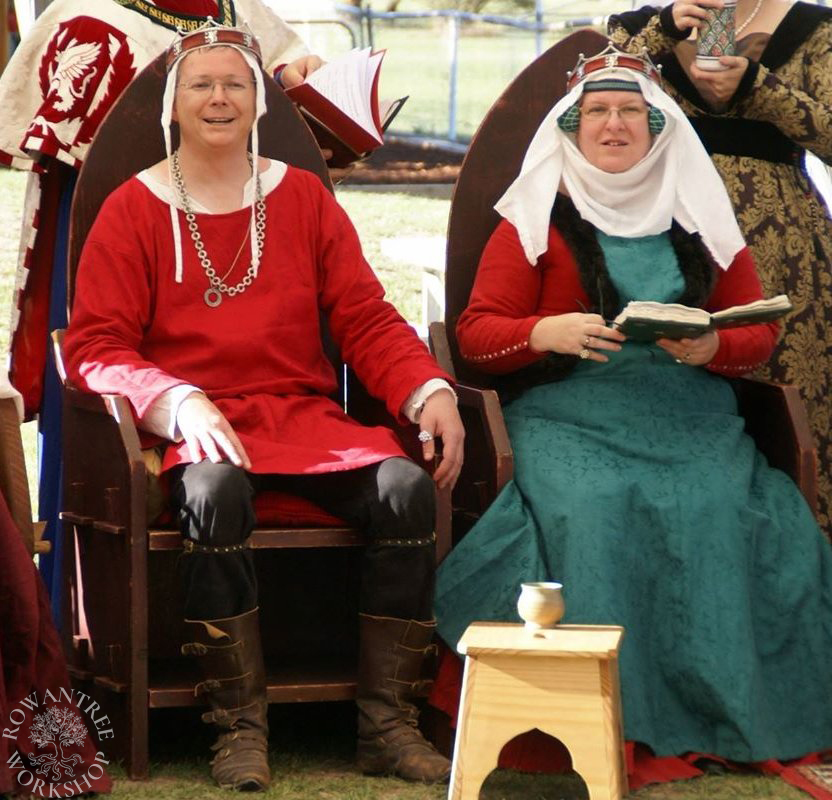An example of this archetypical 14th century headdress, which was worn by women in England, France and adjacent areas.
I made this headdress for my friend Joan, who needed some variety in her 14th century headwear. The headwear needed to work well along, or with a coronet.

Research and Design
These crespinetets (also known as crespines or cauls) do not cover the ears, but perch on the temples as a cover for the tightly wound braid knobs of hair.
We looked at several funeral brasses and effigies from the early 14th century, which depicted crespinettes or dressed hair knobs worn with a veil and wimple,
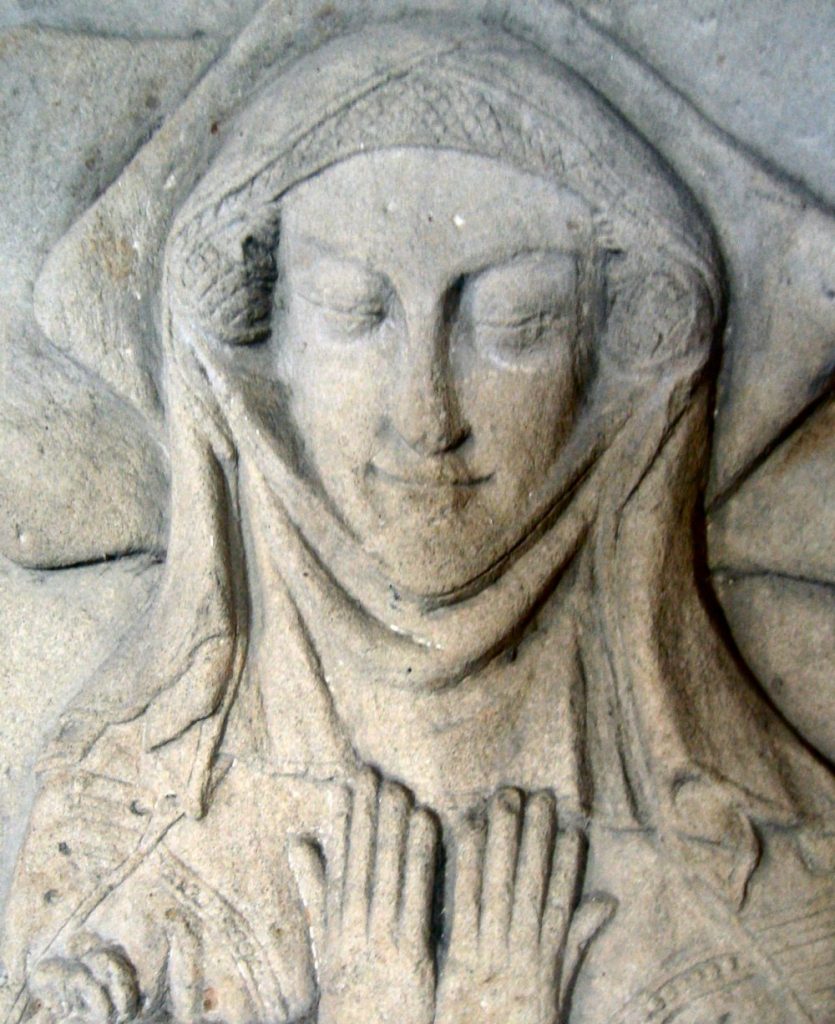
Danby Wiske Parish Church
Source: Effigies & Brasses

St George’s Church
Source: Effigies & Brasses
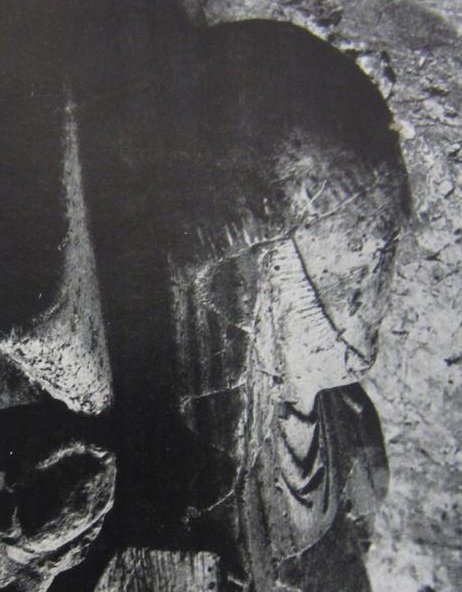
Church of St Mary the Virgin
Source: Effigies & Brasses
All these images show the distincitve knobs, with the linen framing the face. The image of Margarey Camoys also shows a fillet worn under the veil.
Joan wanted the crespinettes to be in green brocade and silver, to match her sideless surcoat. She also had a piece of tablet weaving she had done many years ago, to use as the fillet, if possible. Textiles and Clothing (Crowfoot et al 1992) includes a 14th century example of a tablet woven band used this way.
And finally, a veil with a fine frilled edge, as seen in the Hawise Keynes effigy. In the 14th century these were woven with a loose edge warp to get the ruffled effect – I would need to sew on a ruffle.
Construction
Joan’s hair was too short to form into knots at the temples, but I still wanted to make the crespinettes hollow and light. I could form the shells in millinery buckram (canvas impregnated with water-soluble glue). It can be moulded when wet, but sets hard again. But I needed a suitable mould.
I played around with halved plastic balls, but the shape was wrong – I needed something flatter and larger at the front. I found a small Chinese sieve which I could deform to make the right shape, and then covered it in wet buckram. I had to work the bias hard to get it to form without wrinkles, but got it smooth in the end.
Once dry, I trimmed the bases in a slight curve to follow the face, and wired the edges for strength. Then I covered them in wool batting, to smooth the lumps left by the wire mould.
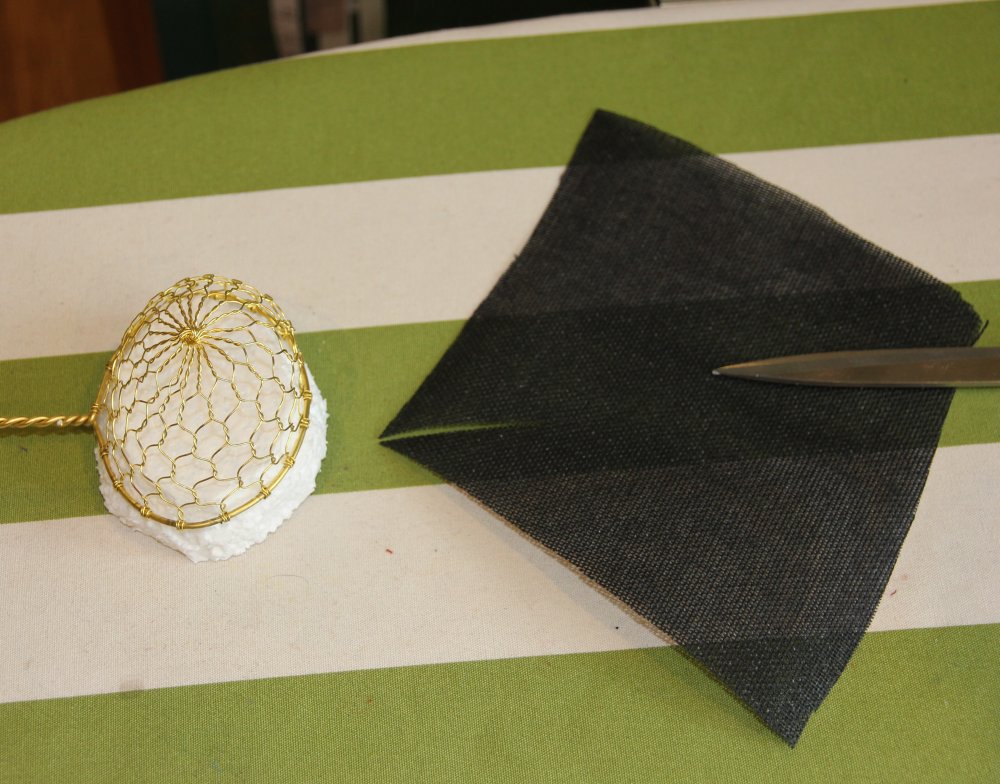
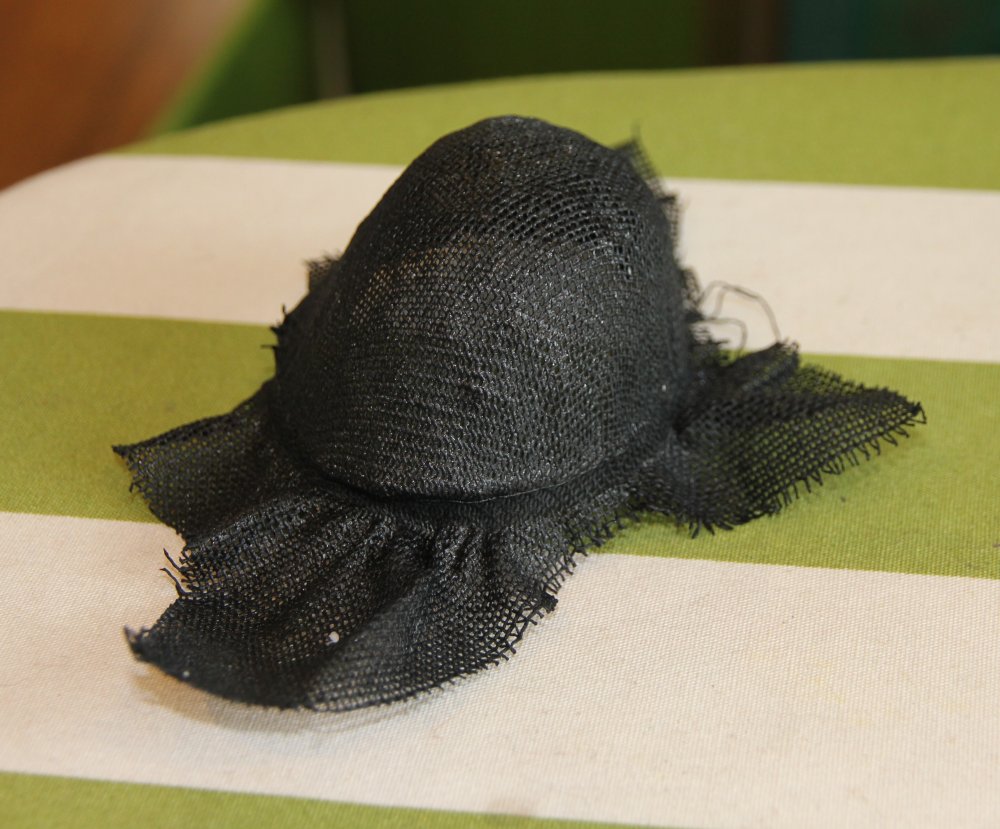

I padded up my headform to the right size, and checked the tablet woven band – it was just long enough. I made a fillet lining of black twill tape, and sewed the band to it. With this in place, I could pin the crespinettes in place and measure more twill tape to go over the head. This top strap is seen in several effigies, and provides a practical way to support the weight of the crespinettes.
I cut and tested a pattern to cover the crespinettes – two pieces and bias-cut to reduce wrinkling. I covered the outside with green brocade, and then couched silver twist to cover the seam and form a network, as seen in the effigies. I sewed the twill tape in place and I lined the inside with black linen.
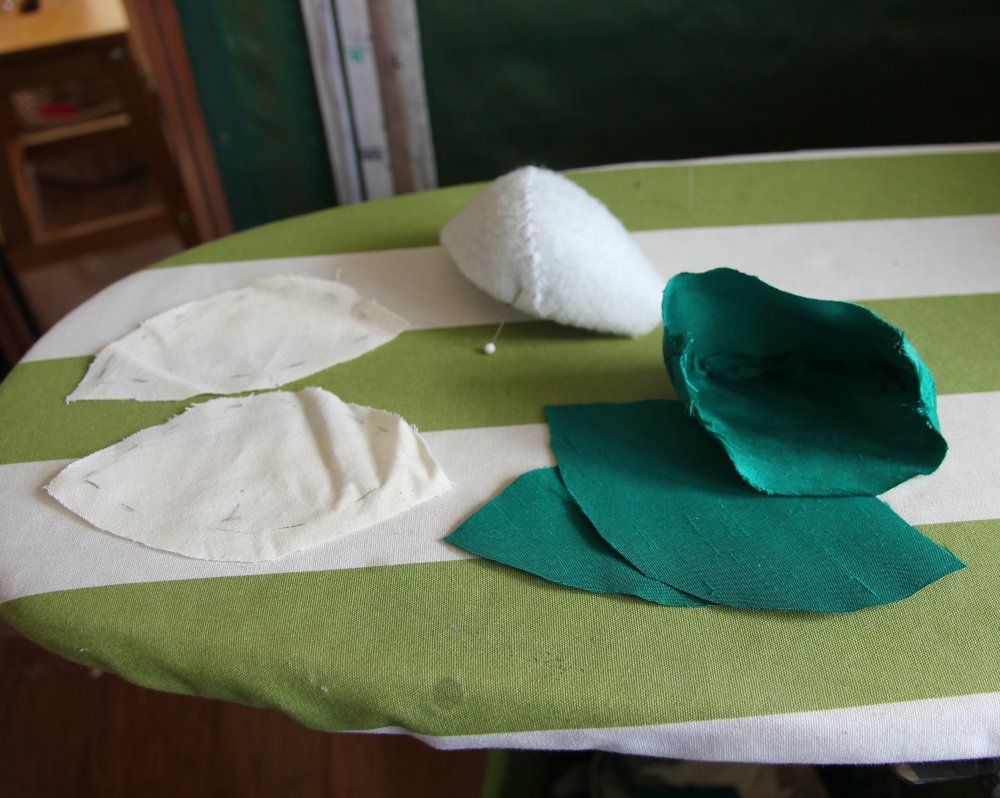

I put the crespinettes set and fillet on the headform, to make sure the balance was right, marked the positions and then sewed the fillet to the band, just above the the crespinettes .
Now for the veil. I cut a very long strip of fine linen (3x the veil edge), folded it and ran it through my smocking pleater. I machine-sewed this to the veil fine linen, then hand sewed a fine linen band to cover the seam hand-hemmed the edges in fine linen thread.
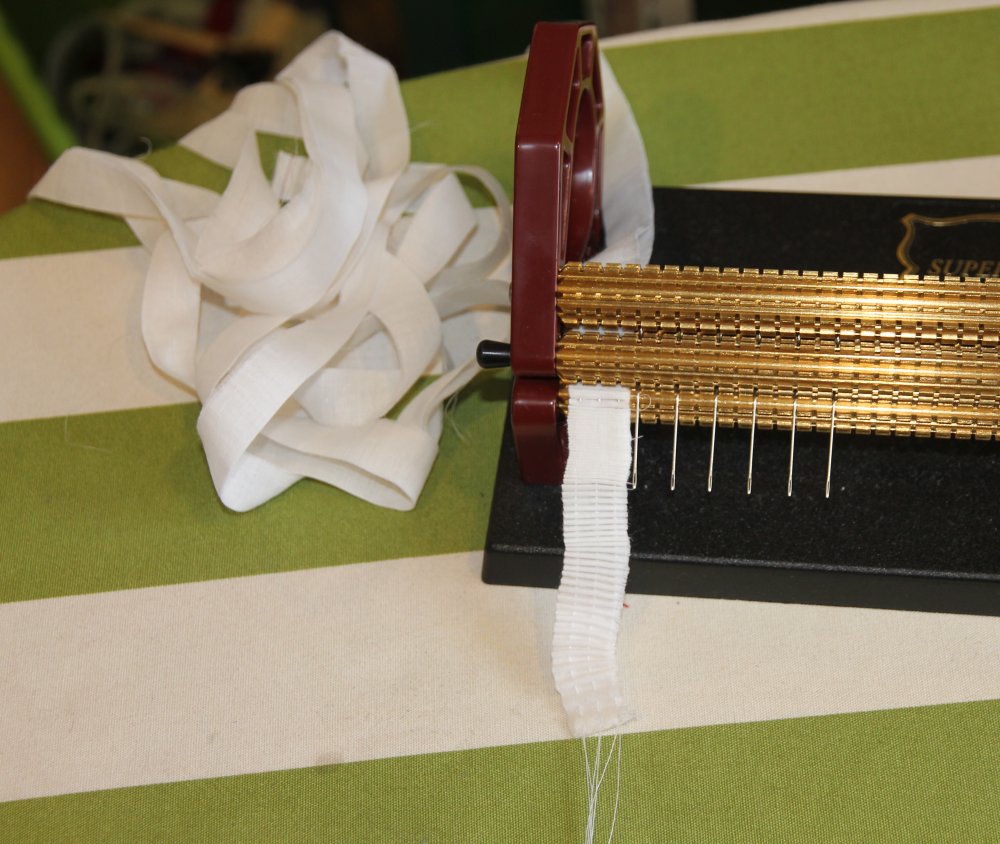

Joan wore the headdress with her wimple and Brigitte cap (as an alternative to a hair net).
